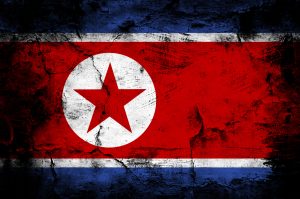North Korea test-fired a cruise missile on Sunday, South Korea’s Joint Chiefs of Staff (JCS) said. The missile was launched around at 7:52 Korea Standard Time (KST) and flew about 300 km at an altitude of about 620 km, South Korea’s military confirmed. This missile test came 28 days after North Korea’s last missile test, a launch of the Hwasong-12 intermediate-range ballistic missile (IRBM) on January 30.
South Korea’s National Security Council (NSC) held an urgent meeting after the missile launch and expressed stern regret over North Korea’s missile test.
United States Pacific Command (USPACOM) also condemned the missile launch and urged North Korea to “refrain from further destabilizing acts” in a statement.
The U.S. special representative for North Korea issues, Sung Kim, spoke on the phone with his counterparts from South Korea and Japan on Sunday after the launch, according to a U.S. State Department statement. “Special Representative Kim condemned the launch, which violated multiple UN Security Council resolutions and presented a serious threat to regional stability,” the statement said.
A day after South Korea’s military detected the missile launch, Korean Central News Agency (KCNA), the North’s state-controlled media, reported that the test was made by the National Aerospace Development Administration and the Academy of Defense Science according to the plan for “developing reconnaissance satellite.” It also added that “the test is of great significance in the development of reconnaissance satellites.”
“They conducted vertical and inclined photographing of the specified area of the ground with cameras to be loaded on satellite and confirmed the characteristics of the high-resolution camera system, data transmission system and altitude control devices and the correctness of their performance,” the KCNA said.
North Korean state media usually provide more details on the performance of missiles a day after the test, but it has not reported any details of the cruise missile tested on Sunday. Instead, state media shared photos of the Korean Peninsula from space reportedly taken by the attached camera on the missile.
North Korea’s past attempts to launch satellites into orbit have sparked fierce opposition from the U.S. and its allies, which see such activities as designed to further Pyongyang’s missile program. North Korea, meanwhile, claims it has the right to pursue space exploration activities.
In January, North Korea conducted seven missile tests, testing a record-high number of missiles in a single month. The missile tests conform with supreme leader Kim Jong Un’s plan to modernize and develop the country’s military system to confront the cutting-edge South Korea-U.S. military assets.
North Korea temporarily halted its missile tests during the Beijing Winter Olympics, likely in deference to China, its only ally. Now that Pyongyang has resumed testing missiles, it will likely conduct one or two more missile tests in the lead up to the South Korean presidential election on March 9.
Additionally, as Russian President Vladimir Putin has invaded Ukraine, North Korea might want to test more advanced missiles while U.S. attention is focused on Ukraine.
“North Korea usually has multiple reasons for test-launching missiles … one would imagine that the distraction caused by the Ukraine crisis certainly provides a useful window of opportunity,” Mason Richey, a professor of international and area studies at Hankuk University of Foreign Studies in Seoul, told The Diplomat.
Considering the missiles North Korea has tested recently, North Korea will likely test more IRBMs in the coming months while refraining from crossing the red line – testing nuclear or intercontinental ballistic missile (ICBM). Depending on the U.S. responses to Russia’s invasion of Ukraine, however, North Korea will likely choose to build stronger ties with China and Russia and advance its bold military modernization plan rather than sitting down with the U.S. and South Korea for talks. In addition, if the U.S. and its European allies fail to halt Russia’s complete invasion of Ukraine, it would give a clear message to North Korea once again that giving up nuclear weapons mean the end of Kim’s regime.
North Korea has shown a clear willingness to develop more advanced weapons that can be a direct threat to the South. In response, South Korea test-fired its indigenous long range surface-to-air missile (L-SAM) on February 23, which is designed to intercept North Korea’s missiles flying at an altitude of 50 km to 60 km. Along with other anti-missile systems such as the Patriot Advanced Capability-3 and KM-SAM (South Korean medium-range surface-to-air anti-missile system), the country is seeking to deploy the L-SAM in 2026 to build a South Korean version of Israel’s Iron Dome anti-missile system.

































